Amid the ongoing battle between Amazon and the GMB union, Retail Week visits Amazon’s LCY3 fulfilment centre in Dartford, Kent, on one of the ecommerce giant’s busiest days of the year
The LCY3 centre opened in August 2021 and spans 547,000 sq ft overlooking the Thames and the Dartford Crossing.
Hundreds of thousands of customer orders are processed through the building each day, with products picked, packed and shipped out in just two hours.
The number of products processed typically accelerates over Prime Day, which is Amazon’s biggest annual event – even surpassing Black Friday and Cyber Monday.
But what was immediately noticeable upon entering the colossal warehouse was how calm and organised everything seemed – especially considering that the two-day shopping event saw 375 million items purchased worldwide to become Amazon’s biggest Prime Day ever.
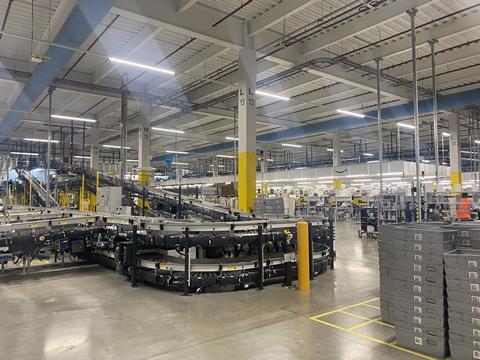
Age of automation
During the tour, Retail Week visited each floor and various departments including stowing, picking, packing and delivery to see how a customer’s order is fulfilled during Prime Day.
It’s difficult to fathom just how many items were processed and sent out for delivery during our visit as it seemed that every nanosecond a package was added to the eight miles of conveyor belts that surrounded the building.
Amazon has 2,500 permanent employees at this specific centre, but it did not seem like all hands on deck as a very small proportion of the workforce was visible while walking around the vast space.
What was definitely visible, however, were the extra workers that could be seen across three floors: robots.
Although not as prominent as the ones used in warehouses across the US, there are still thousands of robots in use at LCY3, with each one weighing 136kg and capable of lifting 668kg – equivalent to the size of a cow.
Despite the large number of robots, the centre was not overrun with them whizzing across the floor as many were in a controlled environment, due to the size and weight of what each was carrying.
An Amazon spokesman says the robots and humans work “in sync” with each other, with the robots performing the more “mundane tasks”, as well as those that could cause repetitive strain injury in humans.
Staff would previously walk around the vast warehouse to pick products, but now robots bring items to employees instead.
Random items are then put into tall, stacked trays, which sit on top of pods that move via QR codes on the floor. They are then directed to different stow stations based on the size of the product.
The pods move quickly in different directions and will automatically cease movement if they detect a human may be near. Senior staff still keep a watchful eye over the process from various screens and can intervene if needed.

The automated tech doesn’t end there. Robot arms are also used to stick address labels on packages at an eye-wateringly rapid speed, while computers inform staff what size boxes items should go in.
Packages are then put on a conveyor belt that swiftly moves them into the right area based on the location they will be delivered to.
The Amazon spokesman says staff enjoy working with the technology, with a lot of them willing to upskill and train to “work more closely” with the robots.
Amazon v GMB
While it seems there is an opportunity for staff to gain new skills thanks to this era of automation, it is hard to ignore the criticism that surrounds Amazon regarding working conditions.
While showing Retail Week around the warehouse, the spokesman points to regular fill-up stations for staff to top up water and offers assurances that they do not have timed toilet breaks or have to “pee in a bottle”.
He says that if anyone comments that Amazon staff are not allowed to use the toilet or have water breaks, he “invites them to come to the warehouse to see for themselves and speak to the workers”.
Retail Week was supposed to speak to one of the managers on site after the tour, but in the end that meeting didn’t take place.
However, some workers have been speaking out against working conditions and pay, with members of the GMB union at the Coventry site striking for months and recently voting for more walkouts.
More than 800 staff in Coventry walked out over three days during Prime Day, but the Amazon spokesman says this had no impact on operations or customer orders.
He says it is only a “small number of workers” making noise and that it is highly unlikely that those at the Dartford centre will strike – although he adds: “Never say never.”
He refers to the fact that workers at the Rugeley, Staffordshire, and Mansfield, Nottinghamshire, fulfilment centres also took part in strike votes, but both failed to meet the required threshold.
The spokesman says that, although pay at LCY3 is at the “mid-range” of £12 an hour, Amazon offers private healthcare and covers 95% of tuition fees for certain courses, along with the opportunity to climb the career ladder, which means “a lot to employees.”




















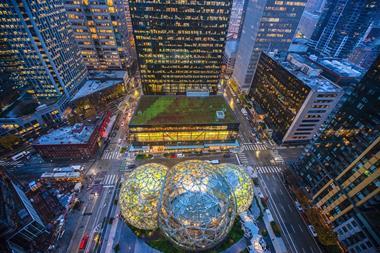

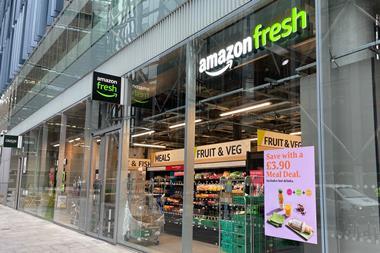

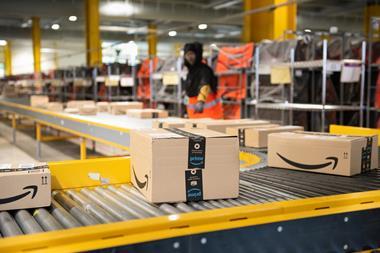
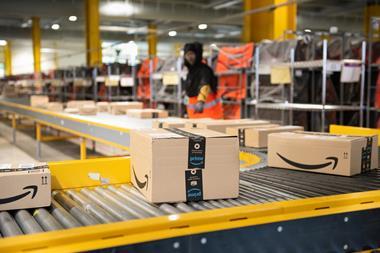
No comments yet